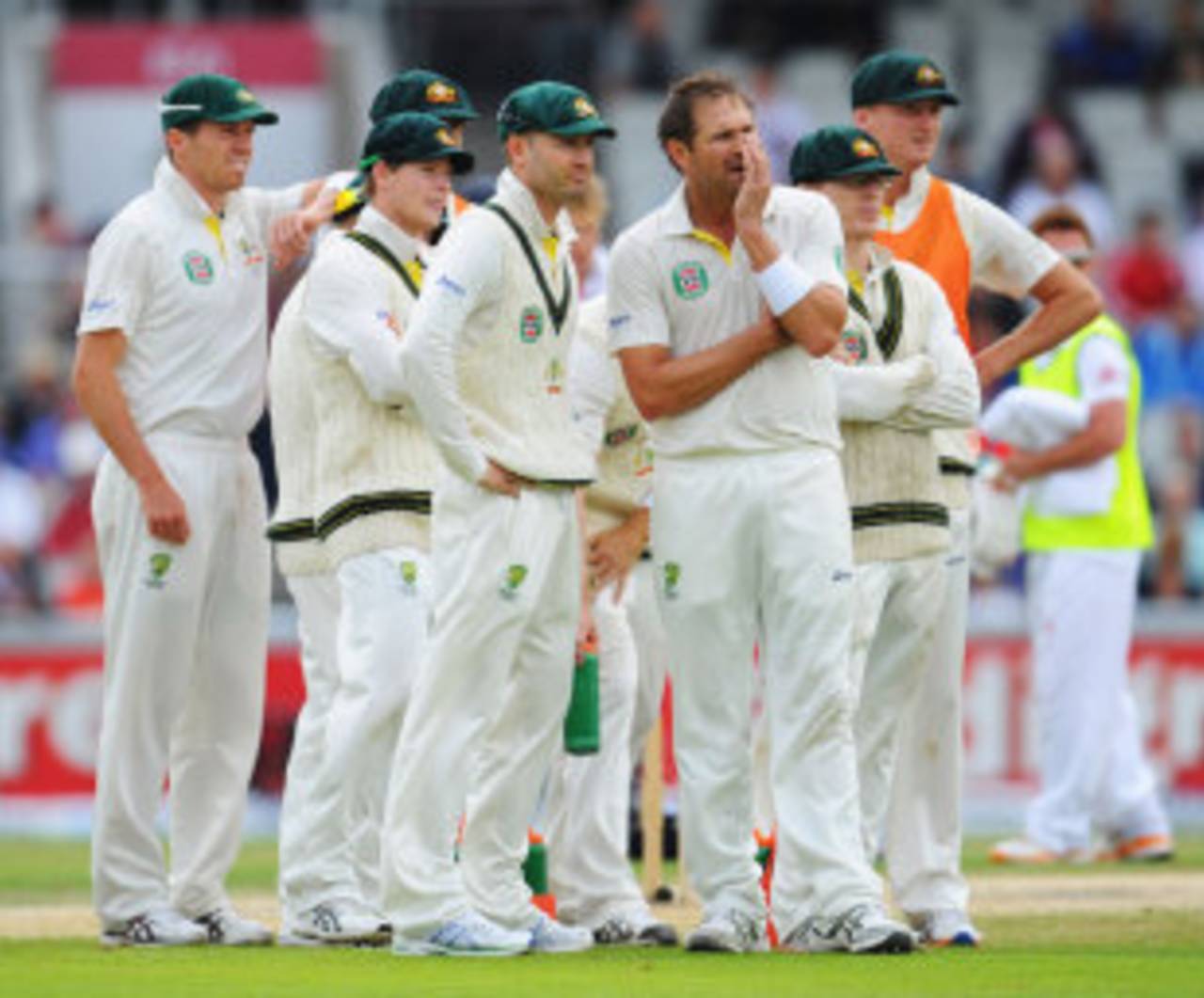DRS set to dominate ICC meet
The DRS, along with the playing conditions at the 2015 World Cup, is set to dominate the proceedings at the ICC chief executives' committee (CEC) meeting in Dubai on September 16 and 17
Nagraj Gollapudi
15-Sep-2013

England and Australia both had reasons to feel aggrieved about the DRS during the recently completed Ashes series • Getty Images
The decision review system (DRS) and the playing conditions at the 2015 World Cup are set to dominate the proceedings at the two-day ICC chief executives' committee (CEC) meeting in Dubai on September 16 and 17. Although the ICC discontinued last year its practice of publishing the agenda and results of the CEC, it is understood that the meet will see a divided house with England and Australia joining hands to take on the other front led by India with support from its sub-continental neighbours - Sri Lanka, Pakistan and Bangladesh - especially on the topic of the referral system.
According to an official privy to the ECB-CA plan, both members want to continue utilising the DRS in bilateral series despite its shortcomings - especially during the recently completed Ashes series. Jonathan Trott was given out lbw on review at Trent Bridge despite an apparent edge, while Usman Khawaja's caught behind dismissal in Manchester during the third Test was upheld even though replays showed daylight between bat and ball. Hot Spot's inability to detect fine edges also created confusion, and towards the end of the series, its evidence was routinely ignored by the third umpire. Geoff Allardice, the ICC operations chief, met with the two sides before the fourth match in Durham to address some of their concerns.
It is understood that David Collier, the ECB chief executive, and his Cricket Australia counterpart James Sutherland are expected to put forward a series of proposals at the CEC to make the DRS more consistent.
During the latest Ashes, one visible hindrance to the DRS was the amount of umpiring errors. To remedy that, both England and Australia want the ICC to enhance the clarity in the communication between the third umpire and the on-field umpires.
"Based on evidence during the Ashes some conversations between the match officials were unintelligible because of language barriers and the ECB and CA want the ICC to create a mechanism where the match officials can communicate between themselves and the broadcaster without creating much confusion," the official said.
Another proposal is to make the role of the television umpire a specialist role. During the Ashes, the ICC had conducted trials allowing the third umpire instant access to TV replays which could help him overrule mistakes committed by the on-field official. During the Old Trafford Test, England umpire Nigel Llong sat in the back of the TV truck, where he received a direct feed of pictures to help him improve the quality of decision making using instant technology.
Dave Richardson, the ICC's chief executive, had said that the exercise would help avoid incidents like the Stuart Broad one during the Trent Bridge Test, when the England allrounder edged Ashton Agar but stood his ground. Aleem Dar, the on-field umpire, failed to detect the edge and Australia, having exhausted their reviews, were left frustrated and annoyed.
The other suggestion England and Australia want to discuss is if the DRS is just there to clear up a howler then a team should not lose a review when it becomes an umpire's call. "Because the margin of error is so minimal between an out and not and an umpire's call," the official said.
However, England and Australia feel not all umpires can adapt quickly to the challenges of being a television umpire. Collier and Sutherland are expected to discuss the issue with Simon Taufel, ICC's umpires training and performance manager.
However constructive their suggestions sound, England and Australia still need India, the staunchest critic of the DRS, on their side. What might make their defence of the DRS weak is the admission of Warren Brennan, the Hot Spot inventor, who stated that tests carried out recently on various modern bats revealed protective coatings across the edges of bats unquestionably diminished the thermal signatures.
Such a reasoning can only enhance India's doubts over the DRS being far from 100% foolproof, a condition they have set in order to accept the referral system. It is understood that N Srinivasan, the BCCI president, had a separate meeting with the representatives of Bangladesh, Pakistan and Sri Lanka on the sidelines of the Asian Cricket Council held in Chennai on Saturday, to garner support.
The other contentious topic the sub-continental teams have become wary about is the use of two new balls in ODIs. The rule came into force from October 2011 after the ICC Cricket Committee recommended it. However, all four Asian countries believe such a rule has proved to be deterrent to their slow bowlers, who play an integral part in the team structure. Not just India, a team like Sri Lanka is heavily reliant on its slow bowlers and is opposed to the two-ball rule only because the hard ball does not allow the spinner to grip the seam properly.
Bad light is another topic member countries are concerned about and there is supposed to be unilateral appeal to the ICC to change the playing conditions to make use of the floodlights at grounds wherever available.
Nagraj Gollapudi is an assistant editor at ESPNcricinfo